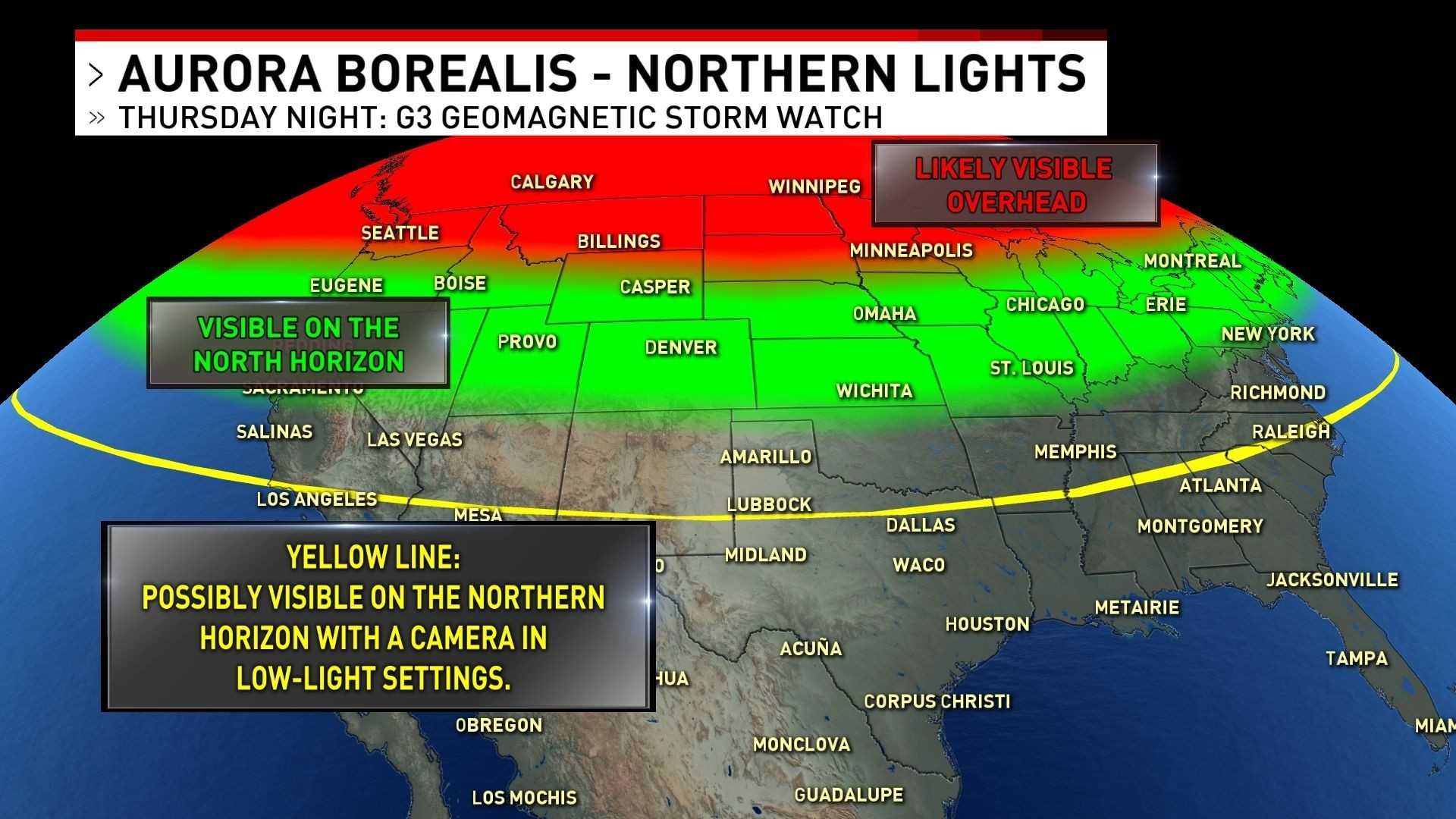News
G3 Geomagnetic Storm Watch Announced for November 6-7

COLORADO, USA — NOAA’s Space Weather Prediction Center (SWPC) issued a G3 Strong Geomagnetic Storm Watch for November 6 and 7, 2025, anticipating impacts from a coronal mass ejection (CME) that could bring the northern lights visible much farther south than usual.
The watch was announced on November 5 due to a CME caused by X-class solar flares recorded on November 4. The storm may start affecting Earth as early as Thursday evening, November 6, and could last into Friday morning.
Forecasters are optimistic about the potential for auroras extending as far south as Pennsylvania, Iowa, and Oregon. However, the exact impact will be gauged when the CME reaches a spacecraft located at Lagrange Point 1, about one million miles from Earth.
According to NOAA, this storm may cause weak or minor degradation of HF radio communication, particularly on the sunlit side of Earth, and could slightly disrupt navigation signals. Power systems are also expected to face voltage irregularities and false alarms.
Current solar wind data show speeds between 340 and 450 km/s, with an increase expected as the CME and a high-speed stream from a coronal hole approach. The SWPC warns that while impacts may be brief, they are crucial for monitoring geomagnetic conditions as they evolve.
With the potential for intensifying auroras, scientists stress the importance of monitoring weather conditions, as cloud cover and moonlight could affect visibility.
This G3 Watch represents an exciting opportunity for sky-gazers across many regions of the United States while professionals remain vigilant about the solar activity anticipated from Region 4274, which continues to display significant flaring potential.












